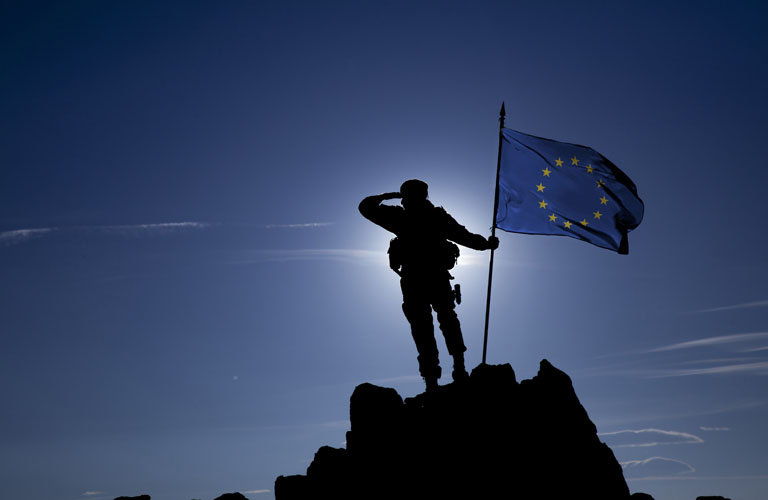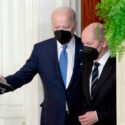From the Finnish perspective, NATO’s role in the Baltic Sea region is a stabilizing factor
Not so long ago, armed conflict between the states on the shores of the Baltic Sea was considered almost unimaginable. The thought of military conflict in the Baltic Sea region was like a distant echo from the past, an idea with no further relevance. The region was often presented as a model case for cooperative security, where prosperity and stability fostered cooperation between respective states and flourishing civil societies and businesses.
Indeed, this cooperative view of the region still predominates among the countries of the Nordic- Baltic Eight (NB8). In everyday encounters we cherish the multilevel cooperation in commerce, security, people-to-people contacts, our common institutional frameworks and our shared history. None of the NB8 states is an island isolated from the rest, a fact borne out by the unique and vulnerable environment of the Baltic Sea we all depend on.
Although interdependence and cooperation have not disappeared from the Baltic Sea region, the talk of cooperation and collective security seems to have given way to more alarmist talk of the Baltic Sea as a region of tension. This tension has been on the rise since the illegal annexation of Crimea and the war in Eastern Ukraine. It has become palpable in the reactions to military exercises, occasions of aerial and maritime encroachment and in various activities targeting hybrid influence. From time to time, we have witnessed dangerous shows of force; unfortunately, the risk of military conflict has re-emerged. The growing insecurity felt by the Baltic States led last year to adaptation and assurance measures by NATO. Air and sea patrols are to be increased and four battalions will be deployed to the Baltic States and Eastern Poland for the first time.
Although the Ukrainian crisis has increased tensions in the Baltic Sea region, the differences between Russia and the other Baltic Sea states in their approach to regional security had been evident for quite some time. Indeed, it appears that Russia, unlike the NB8, views the Baltic Sea more from the traditional geopolitical perspective of gaining physical control over territory. While the NB8 pursues positive-sum efforts of multi-level interdependence, Russia disagrees with the notion that NATO is a strictly defensive alliance, arguing that it is out to reduce Russia’s security.
This is disappointing to the many who hoped that Russia would find a place in Europe as a partner in cooperation with the existing European structures and institutions: NATO, the EU, the OSCE and the Council of Europe. However, every state makes its own strategic choices that other states must respect, and adjust their own policies accordingly.
Adjusting to the strategic choices of Russia does not mean that the NB8 should abandon its cooperative approach and start thinking more geopolitically. On the contrary: it should increase its cooperation in areas prone to cause worry or insecurity. The NB8 needs strategic patience to stand by its collective values and work together in a consistent and coherent manner in order to strengthen its security and solidarity.
The NB8 should employ a threefold approach: it should increase defense cooperation, strengthen common action in countering non-traditional hybrid threats and – last but certainly not least – promote dialogue and confidencebuilding efforts with Russia, even if it strongly condemns Russia’s action in Ukraine.
- It is important to increase security and defense cooperation within the Baltic Sea region. From the Finnish perspective, NATO’s role in the Baltic Sea region is a stabilizing factor. The assurance and adaptation measures of the Readiness Action Plan are defensive and proportionate. These measures address the legitimate security concerns of the most vulnerable countries in the region.
Finland seeks to deepen its defense cooperation on several fronts – with NATO, within the EU and NORDEFCO, the Nordic–Baltic framework and bilaterally, in particular with Sweden. In practice, the overlapping circles of security and cooperation within the Baltic Sea region mean that potential conflict situation would affect all NB8 states in multiple ways, and some fundamentally. - The rapidly changing security environment of the NB8 underlines the importance of the increased exchange of information and analysis of the changes in the strategic situation and military activities in the Baltic Sea region. Shared understanding and common agreement on developments on the ground is a precondition for effective cooperation between partners. There is much to be learned from one another.
A case in point is our growing collaboration in countering and analyzing non-traditional hybrid threats such as, for instance, various types of information operations, the use and misuse of institutions and strategic dependencies within the NB8. We have all benefited from sharing the best practices in countering threats and building resilience within – and between – our societies and state structures.
Finland is working on strengthening this multi-institutional collaboration by aiming to establish the Centre of Excellence for countering hybrid threats in March of this year. The goal is not to create additional heavy structures and expensive bureaucracies, but rather to create intelligent networks consisting of interested parties and employing flexible working methods. The main fields of activities would be (1) research and strategic analysis, (2) training and exercising, and (3) developing preparedness and resilience within Europe and within its states and societies. - We should not only think of ways to prepare ourselves for various risks, but also actively work towards reducing insecurity and risks of unintentional escalation due to miscommunication or accidents. The increased military activity in the Baltic Sea region highlights the need for reinforced confidencebuilding and transparency measures.
Examples of useful frameworks are the OSCE Vienna Document on confidence and security building measures – including tools for conducting inspections and monitoring military activities – and the Treaty on Open Skies. The states should work together to modify and update these instruments to reflect changes that have taken place since their adoption. Finland supports Germany’s push to relaunch the dialogue on renewing conventional arms control in Europe.
Some positive steps have also been taken in the context of the International Civil Aviation Organization (ICAO), in order to improve flight safety in the Baltic Sea area. Finland will host talks aimed at identifying new recommendations to improve flight safety in the area. We hope that these steps will contribute to meeting the broader goal of increased confidence in the region. At the end of the day, an arms race or military escalation in the region is not in the interests of any of the Baltic Sea states, and we should all work together to reduce the risks. Moreover, Russia should approach these efforts more constructively.
No matter how deep the differences over some questions, there remain issues where common ground can be found for mutually beneficial cooperation. Despite the apparent mistrust between Russia and the Nordic and Baltic States on some issues, the region still needs pragmatic cooperation in the fight against human trafficking and organized crime as well as in developing common systems and responses to accidents and emergencies. More impetus is required for these constructive efforts within the Council of Baltic Sea States.
All of the region’s littoral states should remind themselves of the fact that the Baltic Sea will always link their destinies, for better or worse. Despite the many differences between states, the only long-term solution is to learn to get along and respect one another. Only through dialogue can these differences be managed.
A version of this article appeared in print in February, 2017, with the headline “Sea change”.
Timo Soini is the foreign minister of Finland.



